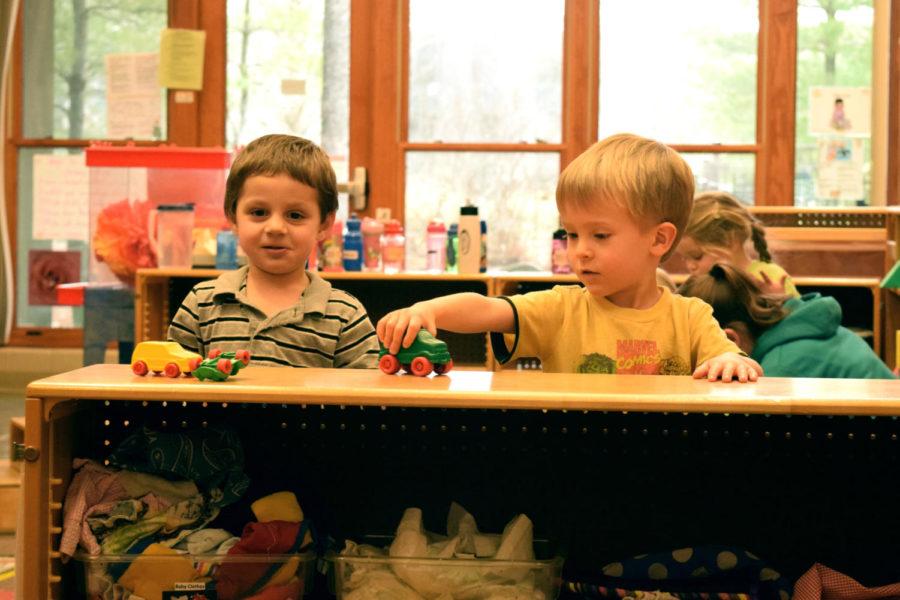Iowa State’s lab school provides valuable experience for teaching students
November 11, 2014
Have you ever seen children being led across campus and wondered where they came from and where they’re going? They’re from the Child Development Laboratory School, and they’re on their way to their physical education class.
The school, located on campus in the Palmer Building, is celebrating its 90th anniversary this year, and it’s the only school of its kind in the area. It isn’t a regular childcare facility because there are two licensed teachers along with ISU students in each of the four rooms.
The vision of the lab school is teacher training, said Karen Colbert, a program coordinator for human development and family studies.
“[The lab school teachers are] coaching our students to be better teachers at the same time as they’re taking care of children,” Colbert said.
The facility has observation booths that encourage other majors to utilize the facility. Jen Van Ryswyk, an administrator for the lab, explained that students from the College of Design could use the observation booths if they were doing a project about children’s environments.
“We like to pull in different aspects of the university,” Van Ryswyk said.
About 16 languages are spoken at the school. Some of the children are learning English for the first time and speak another language at home. The students working in the lab school are taught how to communicate with children using nonverbal methods, including gestures.
“Our [ISU] students are taught how to interact with and teach dual-language learners,” Colbert said.
The school has a waiting list because of the quality of care children receive, Colbert said. The lab school has been given a five-out-of five star rating through Iowa QRS and has achieved accreditation through the National Association for the Education of Young Children.
The school welcomes children of faculty, staff, and students of the university along with children of the greater Ames area. Children from birth to age 5 are enrolled in the program and are split up into four rooms based on their age.
Kaitlyn Baker, senior in early childhood education, currently works in Room One with the infants but has experience in all the rooms. She explained that practicum students in the program start off learning the routines of the children and over the next couple months they take the role of the lead teacher on their day in the lab.
In the future, Baker sees herself working in early intervention. Early intervention involves working with special-needs children under age 3 and their families.
Lauren Perila, senior in early childhood education, spends her time in Room Four with the 3 to 5 year olds. She said that they deal with more behavior guidance and teaching the children using situational methods.
Perila wants to work somewhere in an urban population after graduation. She said the variety and diversity in the lab school has helped prepare her for different situations she’s going to face in her career.
Baker and Perila said the experience they’ve received through the lab school has helped them along their career paths.
“The hands-on aspect of it has been great,” Perila said. “To hear things in the classroom and to think about it in theory and then apply it here, personally that really helps me learn what I’m doing.”
Perila said that they are pushed to reflect and evaluate how they’re performing.
Baker and Perila said the lab school is rewarding because they get to make bonds with the children. Baker explained that the children make bonds with them even though they interact with many different college students.
“It melts your heart,” Perila said. “What I’m doing is making a difference in their life, even if they won’t remember me next semester.”
Baker said the lab school teachers also find a way to connect and make personal bonds even though they work with many different practicum students.
“I have no doubt that if I ever needed anything from any one of them, I had a question or if I wanted a letter of recommendation, they would definitely try to help me any way they could,” Baker said.
The school is a place where children and practicum students can learn and grow together.







